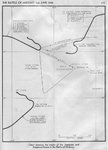parsifal
Colonel
This is a case of comparing apples and oranges. the forces on midway are not comparable to the forces that were attached to CarDiv 1 and 2. The reason is because of where they were, and their total lack of expereince working with the fleet to provide them with coherent tactical intell. You cannot also include all the Japanese BBs for the same reason. If Recon elements have not worked with carriers, they are worse than useless in providing good intell. The USN carriers had no supplementary sources of intelligence gathering of a tactical nature that they could rely on. They might get lucky here and there and get a submarine report, or an occasional sighting report fom land based air, but not coherent or consistent support

